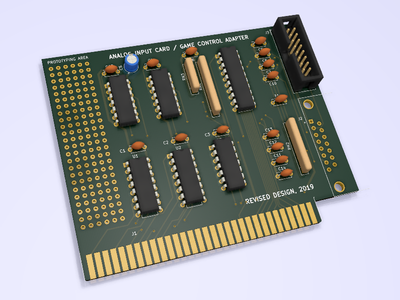First post, by Benedikt
Any interest in something like this?
I'm aware that a game port on its own is not a sound card, but game ports spent the better part of their existence on sound cards, so something like this might still be a nice add-on for someone who only has an Adlib.
This one is designed around two NE556 dual timer ICs rather than a single (obsolete, expensive and NOS at best) NE558 quad timer IC.
Opinions?
